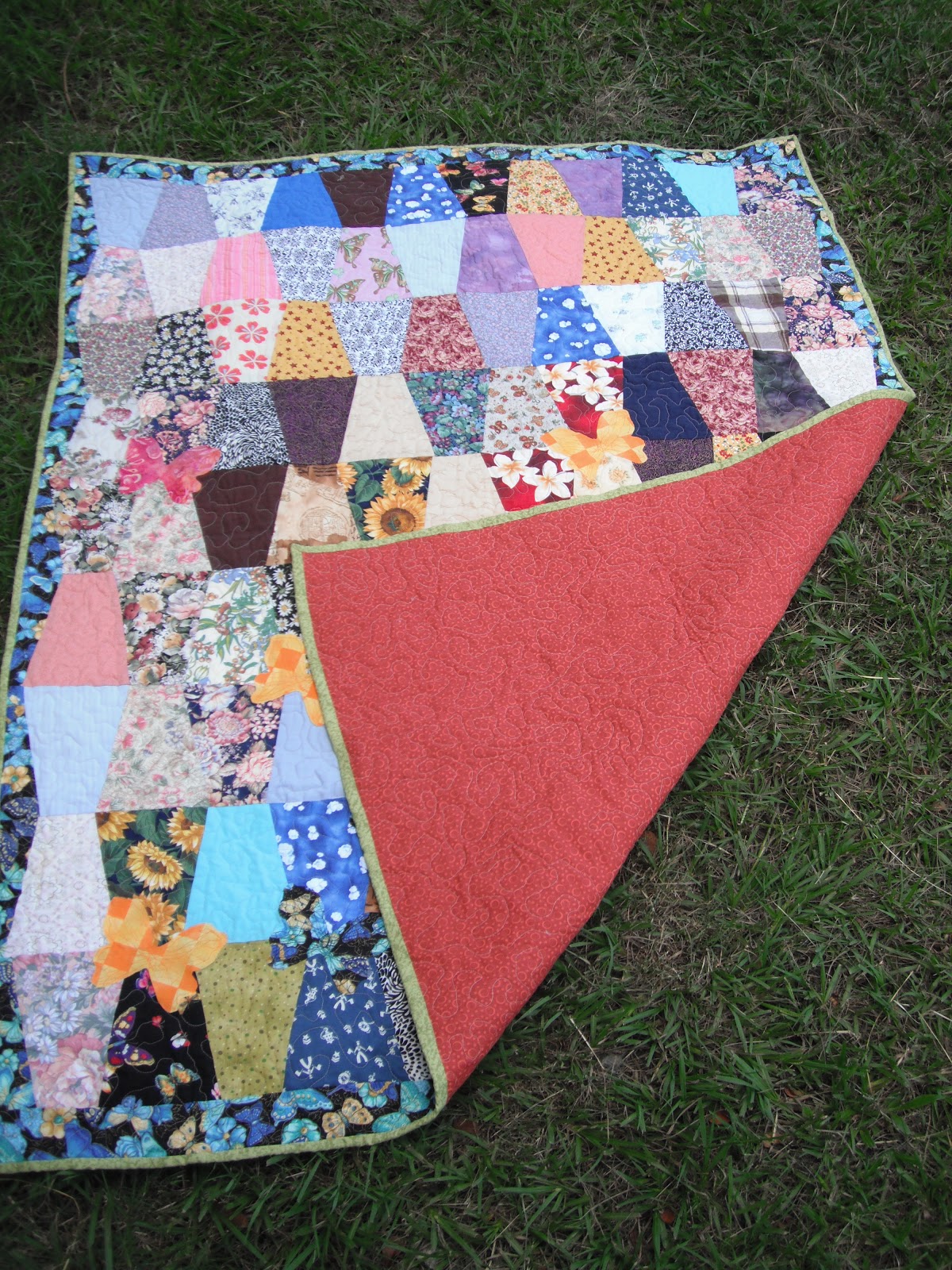My son is mildly obsessed
with trains, so when he came with me to Spotlight at Everton Park to purchase some
backing fabric (for different quilting project); I knew that I had to purchase
this train quilt panel to suppress my guilt for yet again dragging my child to
the fabric shop.
The train cot quilt panel was $15.00, so not such a bad deal.
This isn’t such a huge
project, but still I’m still glad to finally have it finished for my son to
enjoy.
Of course now I wish I’d
made it a single bed size instead of just cot size; as it would continue to be
a more functional quilt, instead of just another play time blanket.
I’ve quilted a basic grid
on the quilt in a blue cotton thread, before heavily quilting other random
areas of the quilt, with colours that blend into that section.
The wadding is bamboo. I
think I’ll always end up using in every quilt that I make from now on as it’s
the ultimate in wadding. It’s a
renewable resource, it’s hot or cold when you want/need it to be and it’s just
so amazingly easy to quilt with.
To make the quilt sandwich
I’ve used my favourite tried and tested method of spraying the 501 spray and
smoothing the fabric on to the wadding. I’ve learnt to always do this on an old
sheet as the one time that I haven’t I’ve had to use sugar soap and a scrubbing
brush to remove the sticky residue off of the floor.
It’s just much easier to
throw down an old sheet, then wash said sheet in the washing machine afterwards.
The binding is an orange
and white striped print, which is actually poly cotton; thankfully it didn’t
stretch too much loose its shape. I’ve just machine stitched the binding on as
I was in a hurry to finish this project due to a very excited little boy asking
me when I would finish off his train quilt. Usually I love to be able to tack
on the last part of the binding my hand.
I would make this type of
quilt again (and recommend others too as well) if I was setting out to make a cot
quilt with very little time available to me. The quilt top is done, so it makes
the whole processes quicker than designing, cutting, sewing (piecing) a quilt top.



































